Guidnance And Tips To Achieve The Best Puppy Obedience Training
Introduction
Bringing a new puppy home is an exciting experience, filled with joy and the promise of a lifelong companionship. However, it also comes with significant responsibilities. One of the most crucial tasks as a new dog owner is teaching your puppy obedience. Proper training sets the foundation for a well-behaved dog and a harmonious relationship between you and your furry friend. This comprehensive guide will walk you through the essential steps of puppy obedience training, offering practical tips to ensure your puppy learns quickly and effectively.
1. Understanding Puppy Behavior
Before diving into training, it’s crucial to understand your puppy’s behavior. Puppies are naturally curious, energetic, and eager to learn. However, they also have short attention spans and can be easily distracted. Recognizing these traits will help you tailor your training sessions to be more effective.
A. The Importance of Early Socialization
Socialization is a key aspect of obedience training. Between the ages of 8 to 16 weeks, puppies are most receptive to new experiences. This period, often referred to as the “critical socialization period,” is crucial for shaping your puppy’s future behavior and temperament.
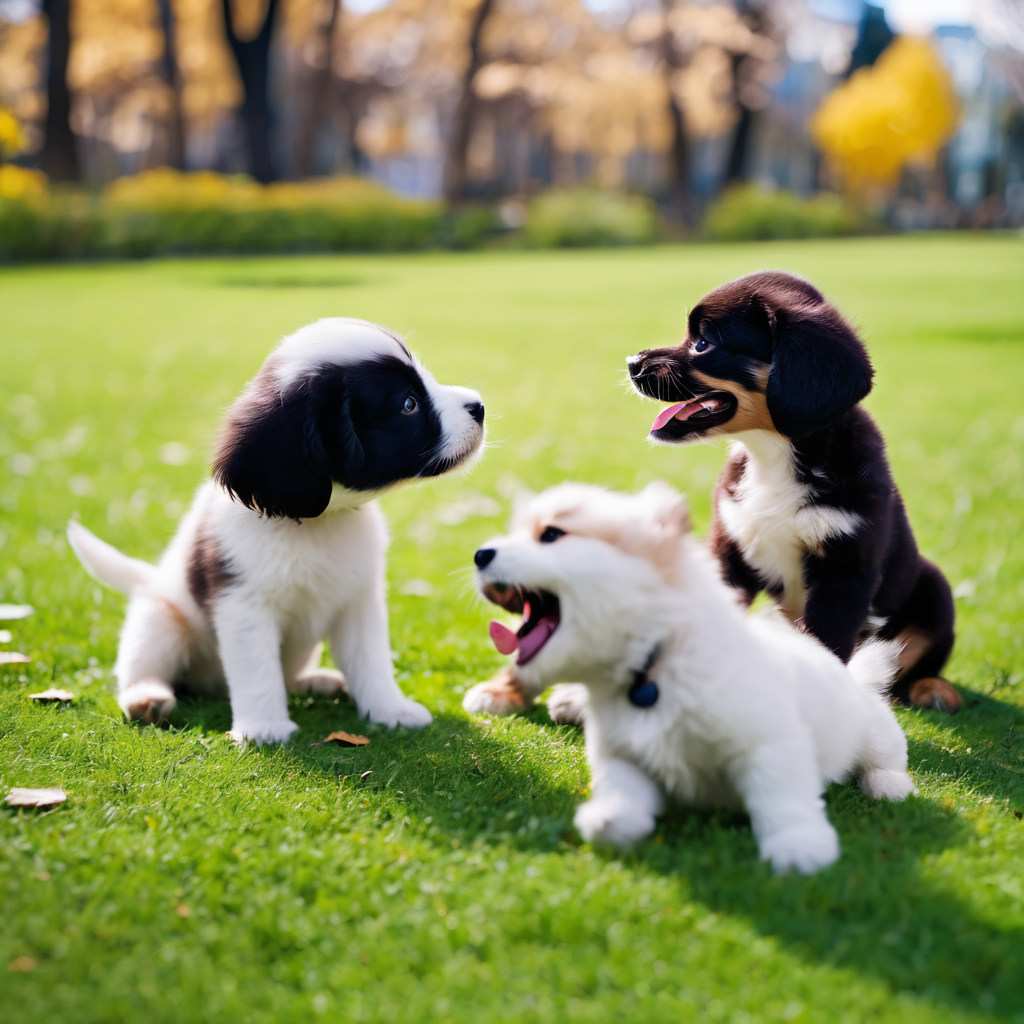
Introducing your puppy to different environments, people, and other animals during this period helps prevent behavioral issues in the future. A well-socialized puppy is more likely to be confident and less fearful, making obedience training smoother. Here are some socialization tips:
- Expose your puppy to various surfaces (grass, concrete, carpet, etc.)
- Introduce them to different sounds (traffic, household appliances, etc.)
- Let them meet people of different ages, genders, and appearances
- Arrange supervised playdates with other vaccinated puppies
- Take them on short car rides to get them used to traveling
Remember to keep all experiences positive and never force your puppy into a situation that clearly frightens them.
B. Positive Reinforcement: The Foundation of Puppy Training
Positive reinforcement is a powerful tool in puppy obedience training. This method involves rewarding your puppy for good behavior, which encourages them to repeat those actions. Rewards can be in the form of treats, praise, or playtime. Consistency in using positive reinforcement helps your puppy understand what is expected of them.
The key principles of positive reinforcement training are:
- Timing: Reward the desired behavior immediately (within seconds) so your puppy associates the reward with the action.
- Consistency: Use the same commands and rewards consistently to avoid confusion.
- Enthusiasm: Show excitement when your puppy does well to reinforce that they’ve done something good.
- Gradual progression: Start with easy tasks and gradually increase difficulty as your puppy improves.
2. Preparing for Training Sessions
Effective puppy training requires preparation. Here are some steps to ensure your training sessions are productive:
A. Set Clear Goals
Define what you want your puppy to learn. Basic commands like “sit,” “stay,” “come,” and “down” are essential for obedience. Start with one command at a time to avoid overwhelming your puppy. As your puppy masters these basics, you can move on to more advanced commands and behaviors.
B. Choose the Right Environment
Select a quiet, distraction-free environment for training sessions. Puppies are easily distracted, so minimizing interruptions will help them focus better. As your puppy progresses, you can gradually introduce more distractions to proof their training in real-world situations.
C. Gather Training Supplies
Have treats, a clicker (if you’re using clicker training), and a leash ready before you begin. Treats should be small and easy to chew, as you’ll be giving them frequently. Some good treat options include:
- Small pieces of cooked chicken or turkey
- Tiny cubes of cheese
- Commercial puppy training treats
- Small pieces of carrots or apple (if your puppy likes them)
Remember to account for these treats in your puppy’s daily calorie intake to prevent overfeeding.
D. Plan Your Training Schedule
Consistency is key in puppy training. Set aside specific times each day for training sessions. Short, frequent sessions are more effective than long, infrequent ones. Aim for 3-5 sessions of 5-10 minutes each day.
3. Teaching Basic Commands
A. Teaching “Sit”
The “sit” command is often the first one taught to puppies as it’s relatively easy for them to learn and provides a foundation for other commands.
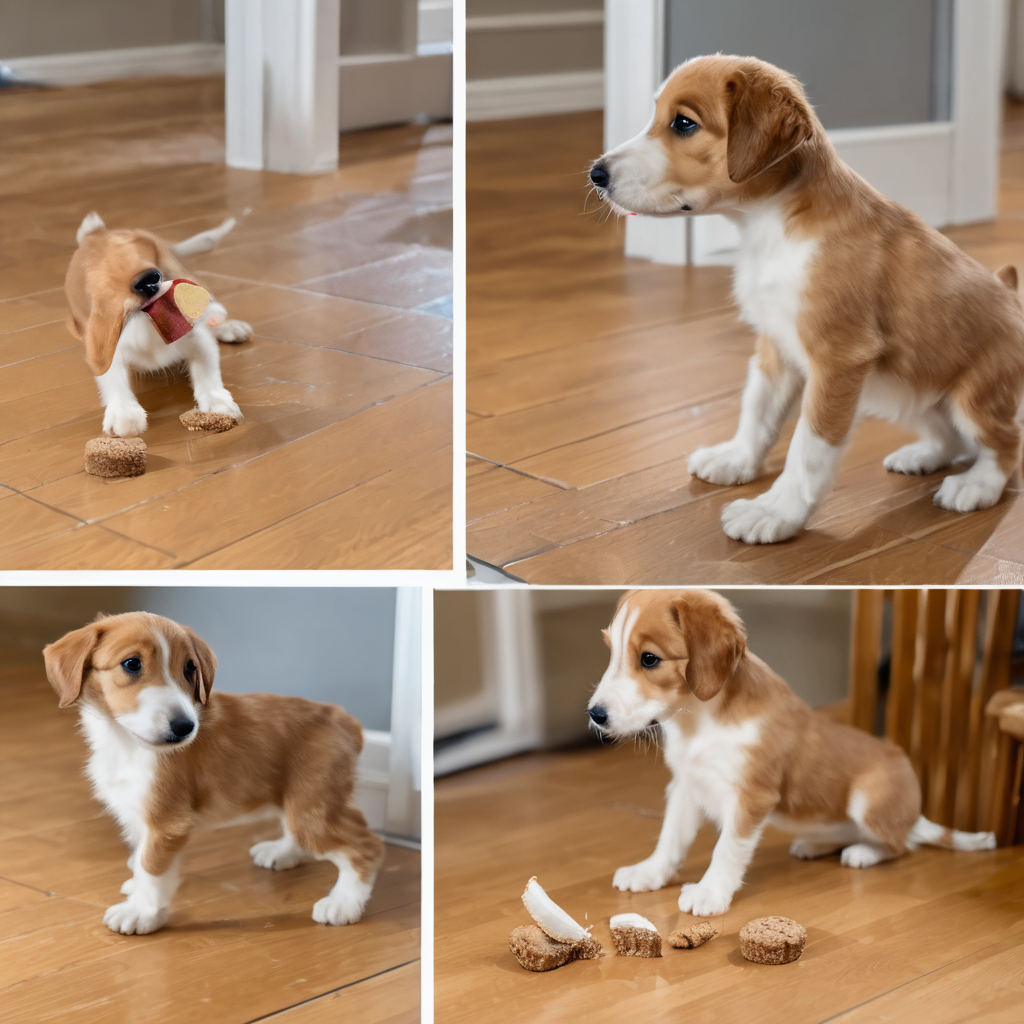
Steps to teach “sit”:
- Hold a treat close to your puppy’s nose.
- Move your hand up, allowing your puppy’s head to follow the treat, which will cause their bottom to lower.
- Once they are in a sitting position, say “sit,” give them the treat, and offer praise.
- Repeat this process several times a day until your puppy masters the command.
As your puppy becomes more proficient, you can start to phase out the treat and use praise as the primary reward.
B. Teaching “Stay”
The “stay” command is crucial for your puppy’s safety and is a bit more challenging than “sit” as it requires impulse control.
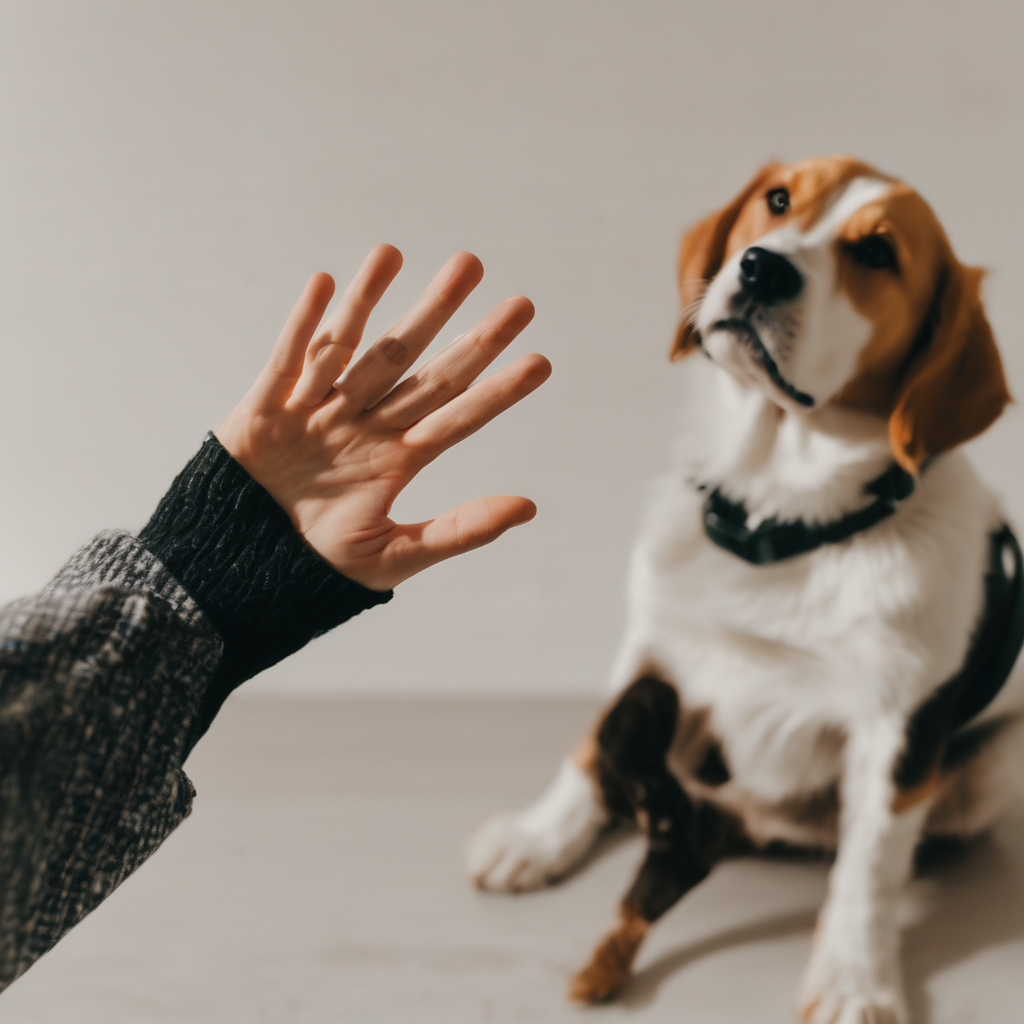
Steps to teach “stay”:
- Ask your puppy to “sit.”
- Open your palm in front of you and say “stay.”
- Take a few steps back.
- If your puppy stays, reward them with a treat and praise. If they move, calmly guide them back to the original position and try again.
- Gradually increase the distance and duration as your puppy improves.
Remember to use a release word like “okay” or “free” to let your puppy know when they can move from the stay position.
C. Teaching “Come”
The “come” command, also known as recall, is essential for your puppy’s safety and off-leash reliability.
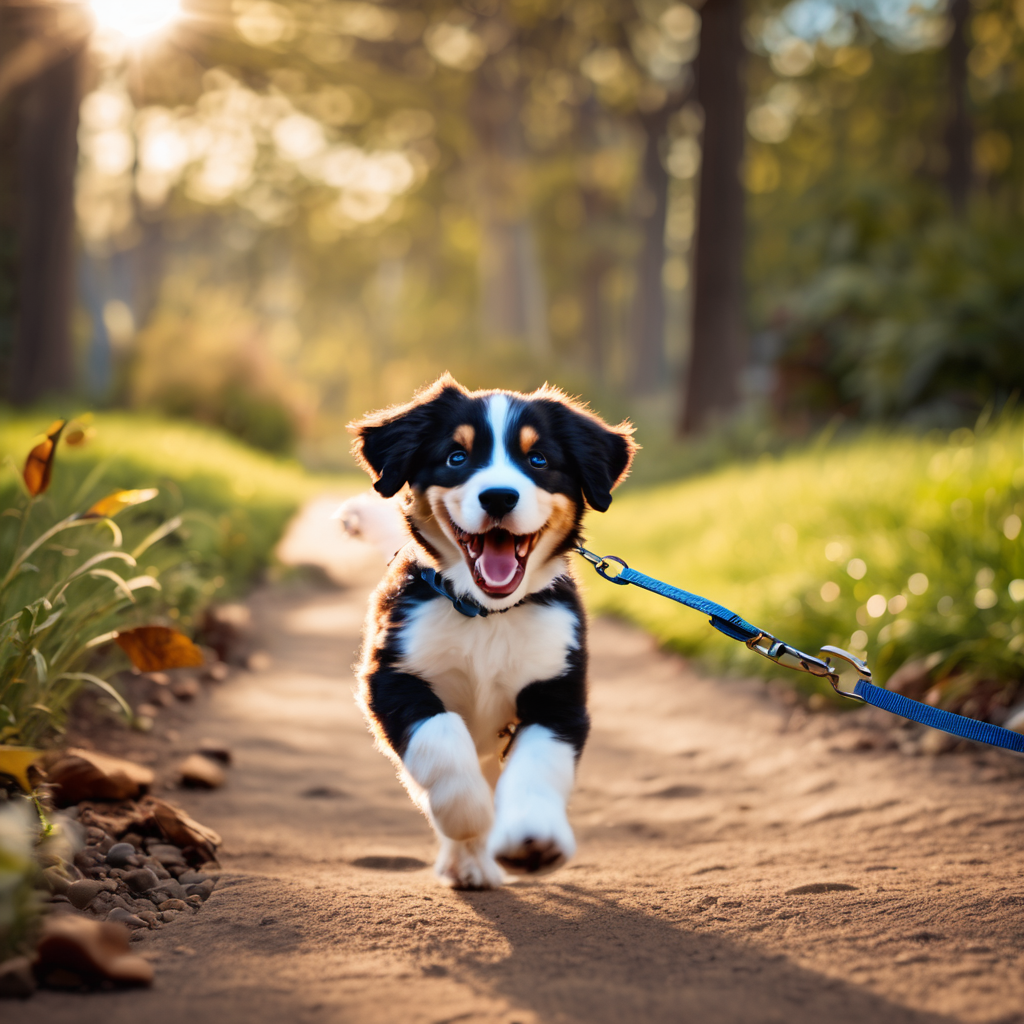
Steps to teach “come”:
- Put your puppy on a leash and let them roam a short distance.
- Crouch down to your puppy’s level and say “come” while gently pulling on the leash.
- When they approach you, reward them with a treat and lots of praise.
- Practice this command in different environments to ensure your puppy responds reliably.
As your puppy improves, you can practice off-leash in a secure area. Always make coming to you a positive experience, even if you’re calling them away from something interesting.
D. Teaching “Down”
The “down” command is useful for keeping your puppy calm and controlled in various situations.
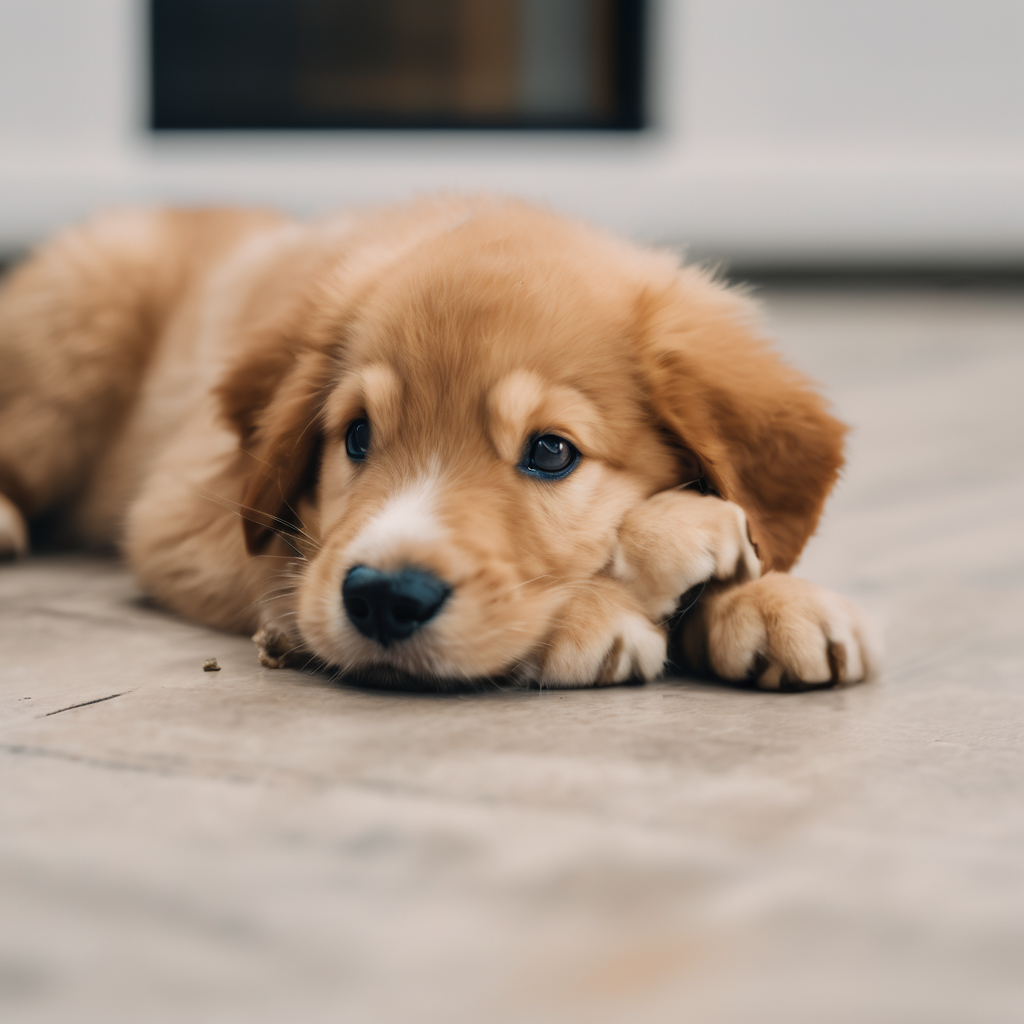
Steps to teach “down”:
- Start with your puppy in a sitting position.
- Hold a treat in front of their nose, then move your hand down to the ground.
- As their nose follows the treat, guide their body into the “down” position.
- Once they are lying down, say “down,” give them the treat, and offer praise.
- Repeat this process, gradually reducing the hand motion until your puppy responds to the verbal command alone.
4. Addressing Common Challenges
Puppy training can come with challenges. Here are some common issues and how to address them:
A. Dealing with Distractions
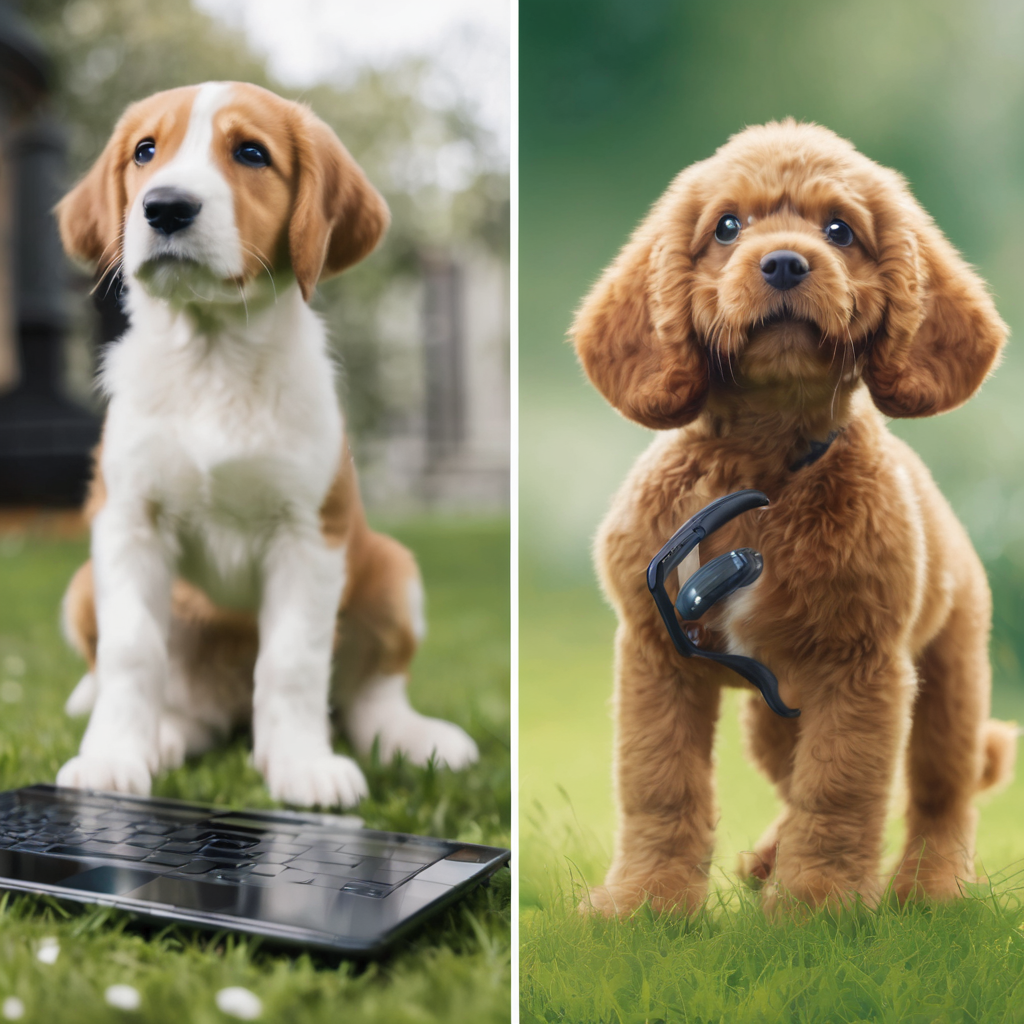
Puppies are naturally curious and easily distracted. If your puppy loses focus during training, try to remove the distraction or move to a quieter area. Gradually introduce distractions as your puppy becomes more proficient in commands. This process, known as “proofing,” helps ensure your puppy will respond to commands in various real-world situations.
B. Handling Nipping and Biting
Nipping and biting are natural behaviors for puppies, but they need to learn that it’s not acceptable. When your puppy bites, let out a high-pitched yelp to mimic how their littermates would react. This will startle them and help them understand that biting hurts.
If your puppy continues to bite, redirect their attention to a chew toy. Consistency is key in discouraging this behavior. You can also teach the “leave it” command to help manage this behavior.
C. Preventing Jumping
Jumping up on people is a common issue that can be addressed with consistent training. When your puppy jumps on you or others, avoid giving them attention. Instead, turn away and ignore them until all four paws are on the ground. Once they’re calm, reward them with praise or a treat.
Teaching an alternative behavior, such as sitting to greet people, can be very effective in preventing jumping.
5. The Role of Consistency and Patience
Consistency and patience are vital in puppy obedience training. Puppies thrive on routine, so it’s important to use the same commands and rewards consistently. Training sessions should be short, frequent, and end on a positive note.
A. Creating a Training Schedule
A structured training schedule helps reinforce learning. Plan for multiple short training sessions throughout the day, each lasting about 5-10 minutes. This approach prevents your puppy from becoming bored or frustrated.
Here’s a sample daily training schedule:
| Time | Activity |
|---|---|
| 7:00 AM | Morning potty break and short training session (5 minutes) |
| 9:00 AM | Training session focusing on a specific command (5-10 minutes) |
| 12:00 PM | Lunchtime potty break and quick training refresher (5 minutes) |
| 3:00 PM | Afternoon training session with focus on socialization (10 minutes) |
| 6:00 PM | Evening potty break and training session (5-10 minutes) |
| 8:00 PM | Final potty break and calm-down training (5 minutes) |
B. Involving the Whole Family
For training to be effective, everyone in the household should be involved and consistent with commands and expectations. Mixed signals can confuse your puppy and slow down the training process. Hold a family meeting to ensure everyone understands and agrees to use the same commands, rewards, and training methods.
6. Advanced Training and Socialization
A. Introduction to Advanced Commands
Once your puppy has mastered the basic commands, you can move on to more advanced training. Advanced commands like “heel,” “leave it,” and “place” build on the basics and help refine your puppy’s behavior. These commands are especially useful in real-world situations.
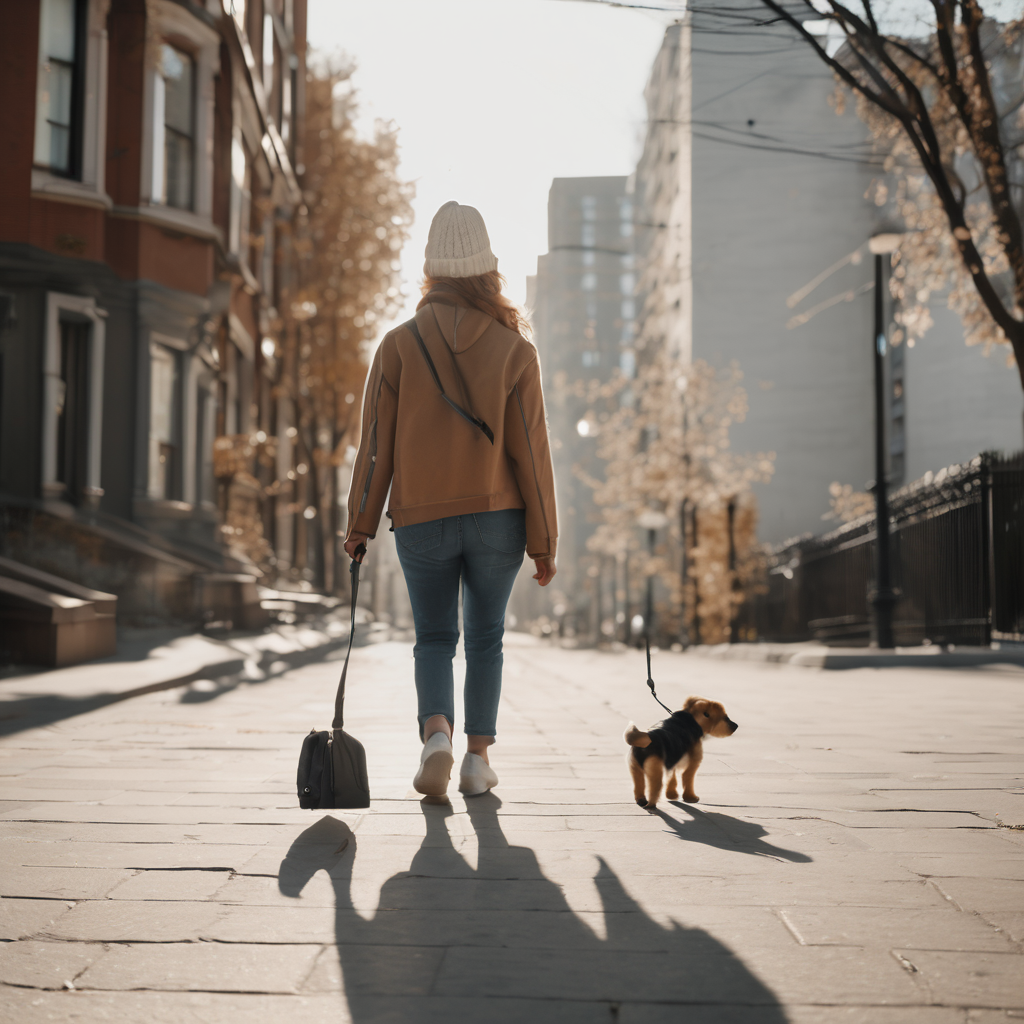
- Heel: Teaches your dog to walk beside you without pulling on the leash.
- Leave it: Helps prevent your dog from picking up unwanted items.
- Place: Trains your dog to go to a specific spot, like a bed or mat, and stay there until released.
B. Continued Socialization
Socialization should be an ongoing process. Continue exposing your puppy to different environments, sounds, people, and other animals. This helps reinforce their training and ensures they remain well-adjusted as they grow. Some ideas for continued socialization include:
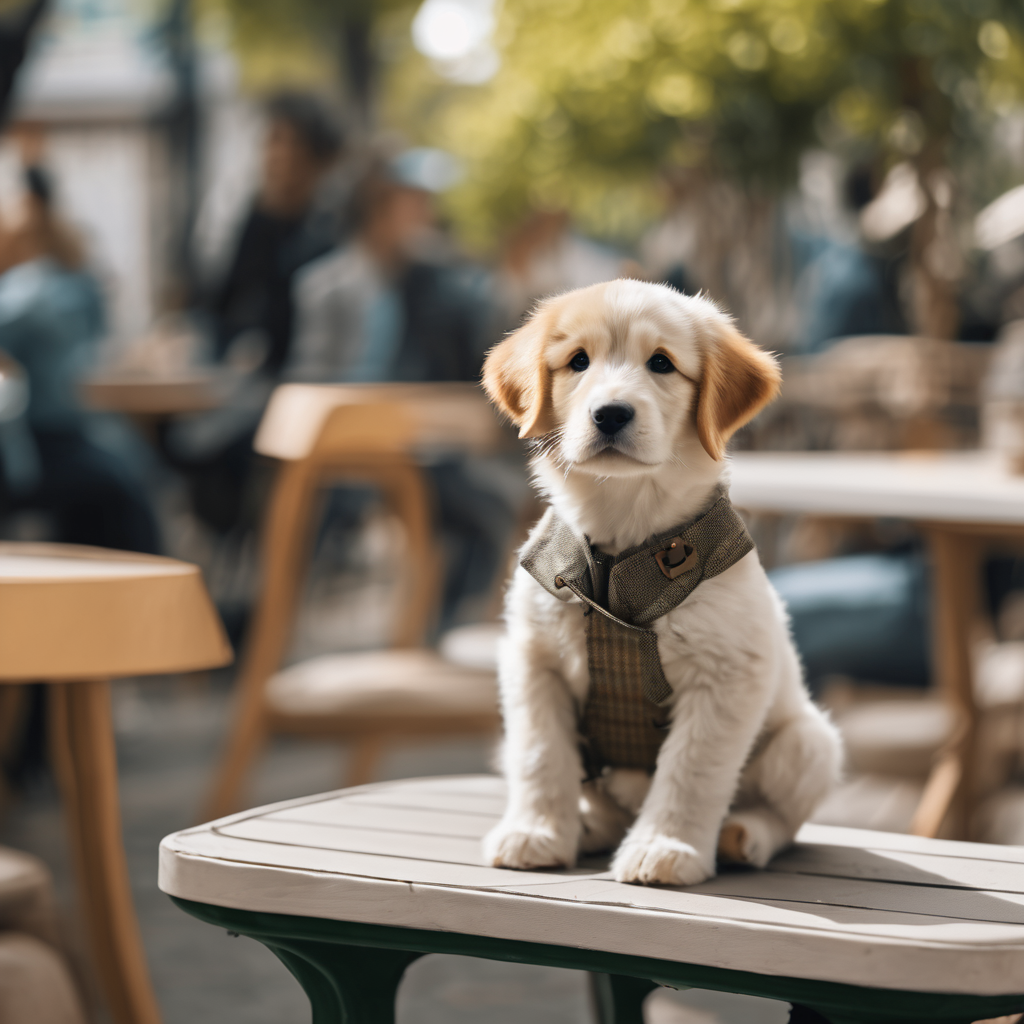
- Visits to pet-friendly stores
- Walks in different neighborhoods
- Supervised interactions with friendly, vaccinated dogs
- Exposure to various household sounds and activities
C. Enrolling in Obedience Classes
If you’re struggling with training or want to take your puppy’s skills to the next level, consider enrolling in a professional obedience class. These classes provide a structured environment where your puppy can learn alongside other dogs. Benefits of obedience classes include:
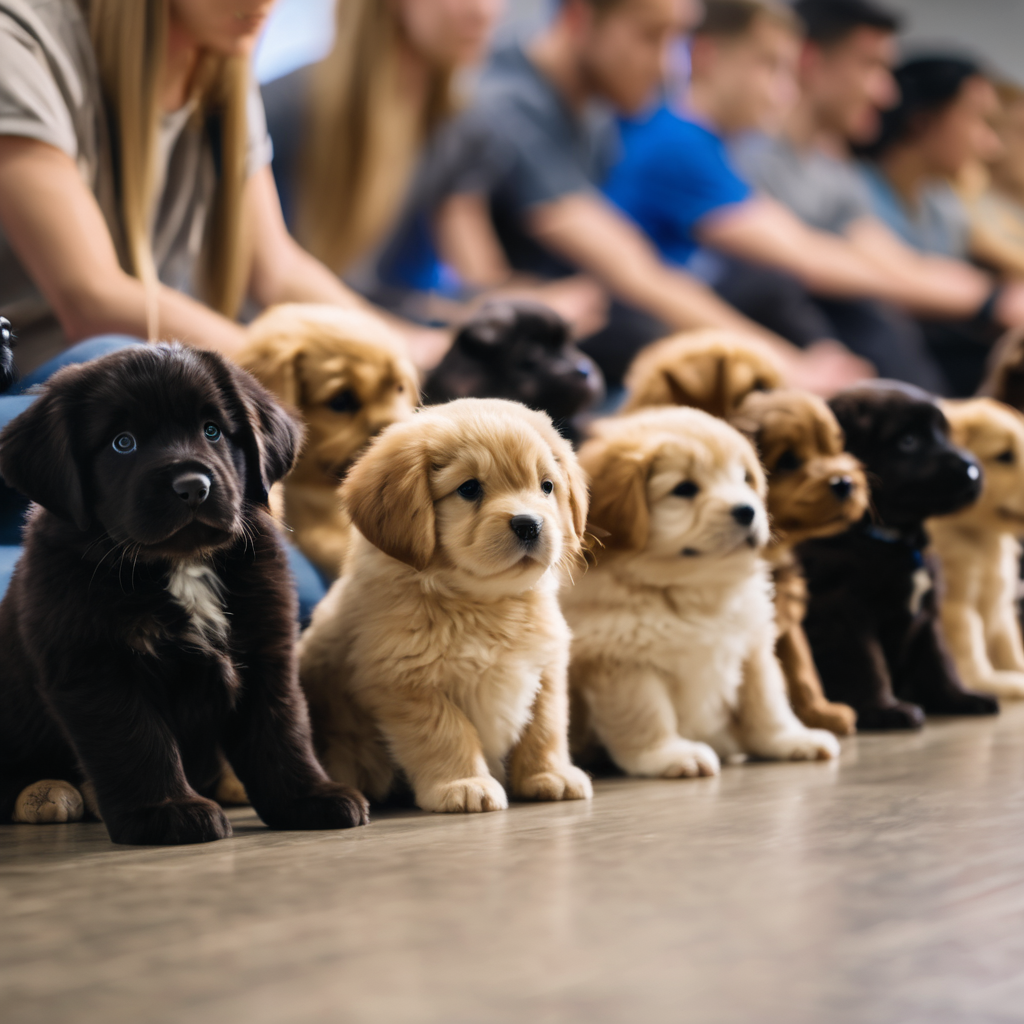
- Professional guidance and feedback
- Socialization opportunities with other puppies and people
- Exposure to distractions in a controlled environment
- Reinforcement of training concepts
7. Troubleshooting and Seeking Help
Even with the best efforts, some puppies may struggle with certain aspects of training. Here’s how to troubleshoot common issues:
A. Recognizing When to Seek Professional Help
If your puppy is not responding to training or displays aggressive behavior, it may be time to consult a professional dog trainer or behaviorist. Early intervention can prevent minor issues from becoming major problems. Signs that you might need professional help include:
- Persistent aggression towards people or other animals
- Extreme fearfulness or anxiety
- Inability to learn basic commands despite consistent training
- Destructive behaviors that don’t improve with training
B. Using Training Tools Wisely
Training tools like clickers, collars, and harnesses can be helpful but should be used correctly. Ensure you understand how to use each tool to avoid causing harm or confusion to your puppy. Here’s a quick guide to common training tools:
| Tool | Purpose | Proper Use |
|---|---|---|
| Clicker | Marks desired behaviors | Click immediately when the desired behavior occurs, then reward |
| Flat Collar | Everyday wear, ID tags | Should fit comfortably with room for two fingers between collar and neck |
| Harness | Reduces pulling, better control | Ensure proper fit; use for walks and training sessions |
| Long Line | Safe distance training | Use for recall training in open areas; never let it wrap around limbs |
Remember, no tool is a substitute for patient, consistent training. Always prioritize positive reinforcement methods.
Conclusion
Puppy obedience training is a journey that requires time, patience, and consistency. By understanding your puppy’s behavior, using positive reinforcement, and following a structured training plan, you can lay the foundation for a well-behaved adult dog. Remember that every puppy is unique and may progress at different rates. Celebrate small victories and don’t get discouraged by setbacks.
The bond you build with your puppy during these training sessions will last a lifetime. Enjoy the process, stay patient, and soon you’ll have a well-mannered companion who responds reliably to your commands. Happy training!
Proposed YouTube Video Embed
For a visual guide on teaching your puppy basic commands, check out this helpful video that walks you through the process step by step: [Embed the video here].

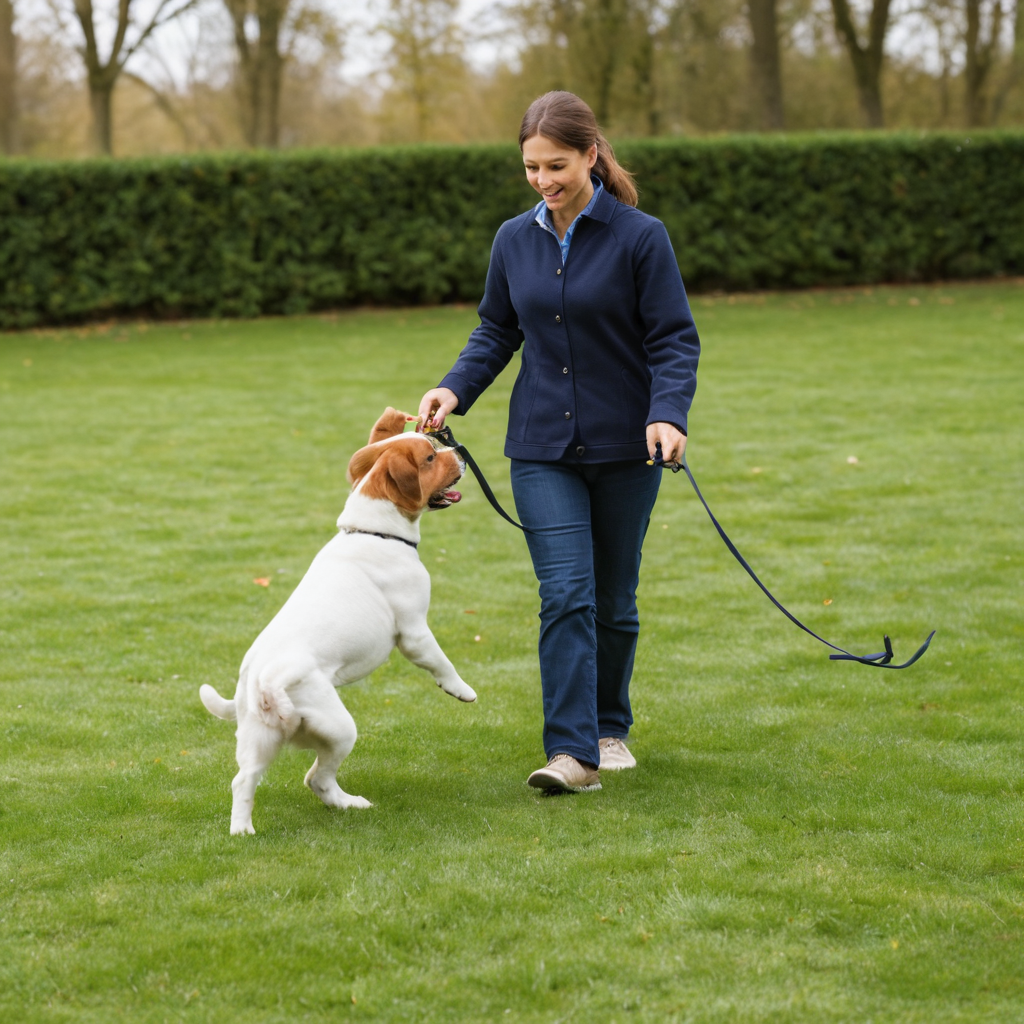

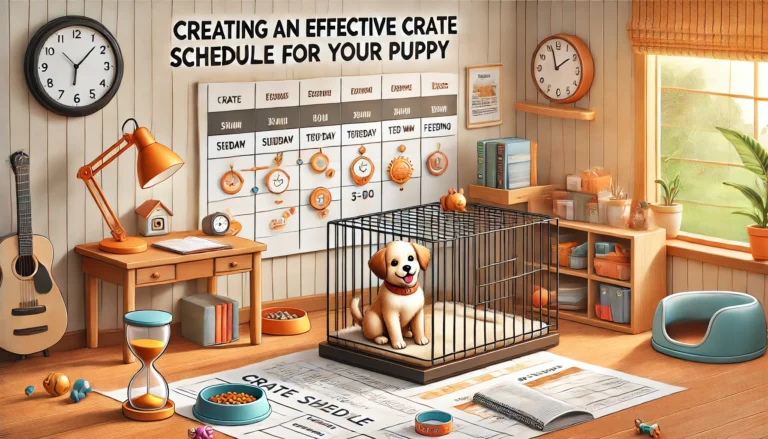
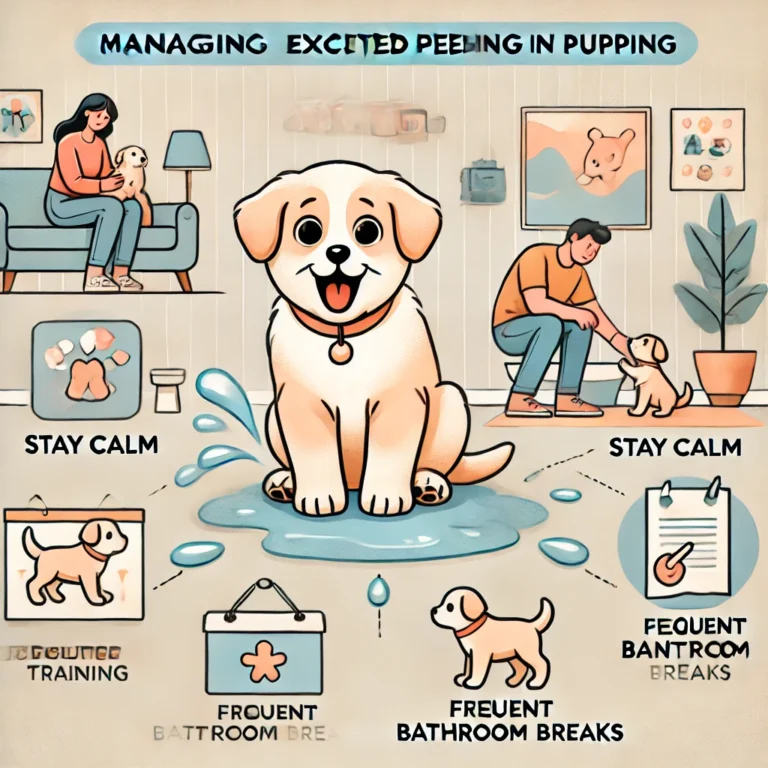

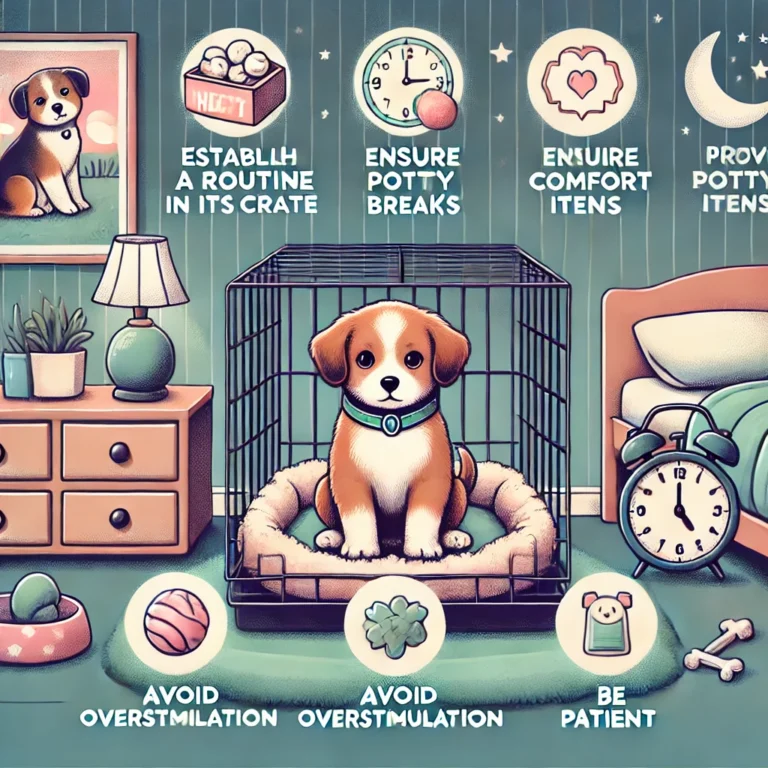
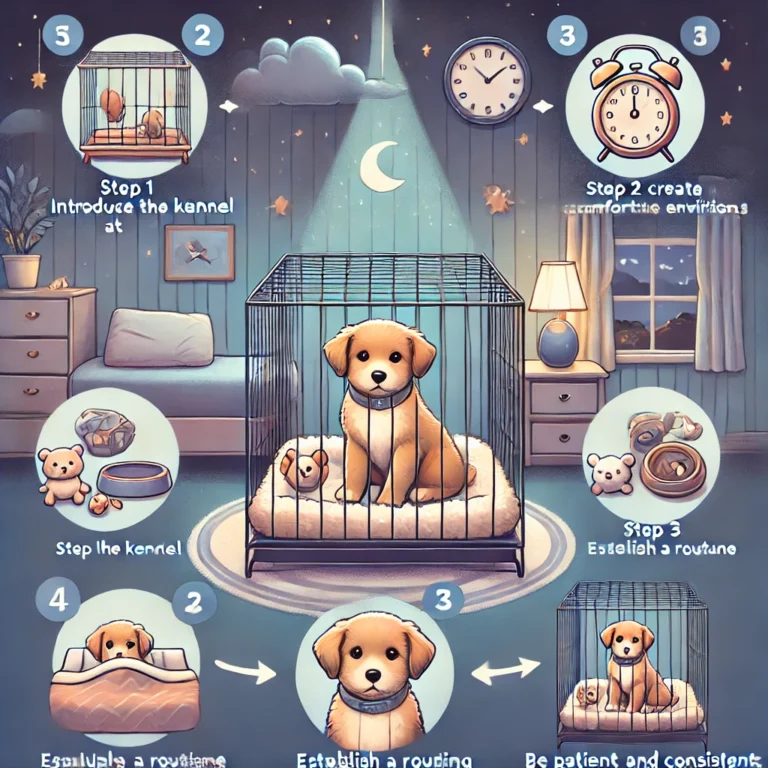
One Comment